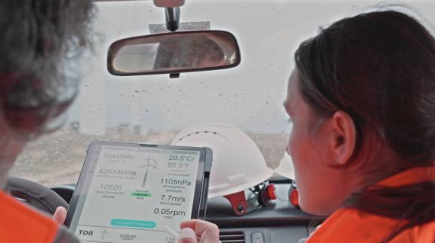Artificial Intelligence (AI) has emerged as a transformative force in the automotive industry, revolutionizing vehicles’ capabilities, safety features, and overall driving experience. From autonomous driving systems to advanced vehicle diagnostics, AI technologies are reshaping how cars are designed, manufactured, operated, and maintained.
Autonomous Driving and Safety Innovations
One of the most profound impacts of AI in automotive technology is its role in advancing autonomous driving capabilities. AI-powered systems enable vehicles to perceive their surroundings, make decisions in real-time, and navigate complex environments without human intervention. Machine learning algorithms analyze vast amounts of sensor data from cameras, radar, lidar, and ultrasonic sensors to detect objects, predict movements, and ensure safe navigation on roads.
These advancements not only promise to reduce accidents caused by human error but also open up possibilities for improved traffic management, reduced congestion, and enhanced mobility options for elderly and disabled individuals.
Enhanced Driver Assistance Systems (ADAS)
AI is enhancing traditional driver assistance systems, making them more intuitive and responsive. ADAS features such as adaptive cruise control, lane-keeping assistance, automatic emergency braking, and parking assistance rely on AI algorithms to interpret sensor data and assist drivers in various situations. These systems not only enhance safety but also reduce driver fatigue and stress during long journeys.
Personalized In-Car Experiences
AI enables personalized in-car experiences by understanding and adapting to individual driver preferences and behavior. Voice recognition systems powered by natural language processing (NLP) allow drivers to interact with their vehicles more naturally, controlling navigation, entertainment, climate control, and communication features hands-free.
Moreover, AI-driven infotainment systems can recommend personalized content based on past preferences and real-time context, enriching the driving experience and keeping occupants engaged and entertained.
Predictive Maintenance and Vehicle Health Monitoring
AI is transforming vehicle maintenance by enabling predictive maintenance and real-time monitoring of vehicle health. Machine learning algorithms analyze data from sensors and diagnostic systems to detect potential issues before they escalate, minimizing downtime and costly repairs. Manufacturers and service providers can proactively schedule maintenance appointments and recommend necessary repairs based on predictive analytics, ensuring vehicles operate at peak performance and reliability.
Manufacturing and Supply Chain Optimization
AI technologies are optimizing automotive manufacturing processes and supply chain management. AI-powered robots and automated systems streamline assembly lines, improve precision in manufacturing, and enhance productivity. Predictive analytics and machine learning algorithms optimize inventory management, reducing waste and ensuring parts availability, thereby improving overall efficiency and reducing production costs.
Challenges and Considerations
While AI offers significant benefits to the automotive industry, it also presents challenges related to data privacy, cybersecurity, ethical considerations, and regulatory compliance. Protecting sensitive driver and vehicle data, ensuring AI systems operate ethically and safely, and addressing potential biases in AI algorithms are critical considerations for manufacturers, policymakers, and stakeholders.
Conclusion
In conclusion, AI is driving a revolution in automotive technology, transforming vehicles into intelligent, connected, and autonomous entities. From enhancing safety and driver assistance systems to optimizing manufacturing processes and personalizing in-car experiences, AI is reshaping the way vehicles are designed, operated, and maintained. As AI technologies continue to evolve, their integration into automotive systems promises to deliver safer, more efficient, and more enjoyable driving experiences while paving the way for a future of mobility that is smarter, more sustainable, and interconnected.
